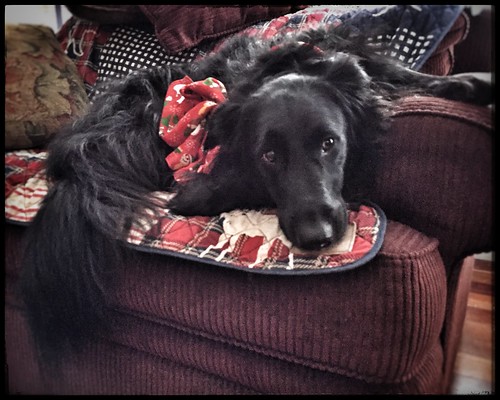The transiently transfected cells were propagated in Nunc EasyFill Cell Factories (Thermo Fischer Scientific) and the antibodies were purified to homogeneity from the mobile society supernatants by affinity chromatography on MAbSelect protein A column (GE Healthcare) adopted by gel filtration on HiLoad 16/ sixty Superdex 200 column (GE Healthcare) equilibrated in PBS, pH 7.4. The purified antibodies consisted primarily of monomeric fractions with presence of the higher-molecular bodyweight varieties (dimers and aggregates) not exceeding 5%. For manufacturing of the ADCCenhanced (defucosylated) antibody variants, a selective inhibitor of class I a-mannosidases, kifunensine (Sigma-Aldrich), was extra to the culture medium at focus one hundred ng/mL, as earlier described [38,39].
For preliminary characterization, the scFv fragments have been expressed in micro organism and isolated from soluble periplasmic extracts by immobilized steel-ion affinity chromatography (IMAC) on HiTrap Ni-Sepharose columns (GE Healthcare, Uppsala, Sweden) by flow cytometry, nor binding to human, mouse and monkey tissues, as demonstrated by immunohistochemistry (IHC). Effect of antibodies on ligand-induced signaling using calcium flux assay. CCR4-constructive CCRF-CEM cells loaded with the Ca2+ sensing dye Fluo-4 were pre-incubated with ten mg/mL of IgGs KM3060var, 17G or 9E for 15 min before including CCR4-specific ligands, CCL17 or CCL22 at final concentrations of 10 ng/mL and 2.5 ng/mL, respectively. As a damaging handle, an irrelevant chemokine, stromal cell-derived factor-1a (SDF1a/CXCL12), particular for CXCR4  receptor was used at a concentration of 2.five ng/mL. Time course data from calcium flux assays ended up expressed in conditions of relative fluorescent units (RFU). The black line in all panels signifies the sign from the non-handled cells (management). Impact of antibodies on mobile signaling induced by the ligands CCL22, CCL17 and CXCL12 is shown in panels (a), (b) and (c), respectively. Impact of antibodies alone at concentrations 10 mg/mL and 100 mg/mL on cell signaling is proven in panels (d) and (e), respectively.
receptor was used at a concentration of 2.five ng/mL. Time course data from calcium flux assays ended up expressed in conditions of relative fluorescent units (RFU). The black line in all panels signifies the sign from the non-handled cells (management). Impact of antibodies on mobile signaling induced by the ligands CCL22, CCL17 and CXCL12 is shown in panels (a), (b) and (c), respectively. Impact of antibodies alone at concentrations 10 mg/mL and 100 mg/mL on cell signaling is proven in panels (d) and (e), respectively.
For stream cytometry, a complete of a hundred and five cells ended up incubated with a hundred mL PBS (Daily life Technologies) supplemented with .2% BSA and .09% sodium azide (Roth, Karlsruhe, Germany) (referred to as FACS buffer) 19199649and made up of diluted recombinant antibodies for sixty min on ice at 4uC. Soon after washing with FACS buffer, the cells had been stained with one mg/mL of RPhycoerythrin (RPE)-conjugated goat anti-human IgG (AbD Serotec, Dusseldorf, Germany) for thirty min at 4uC. The stained cells ended up washed and resuspended in 200 mL of FACS buffer that contains two mg/mL propidium iodide (Sigma-Aldrich) to exclude dead cells. The fluorescence of stained cells was calculated making use of both an EasyCyte movement cytometer (Guava Technologies, Hayward, CA) or a FACSCanto II circulation cytometer (BD Biosciences). Median fluorescence intensity values were plotted against the antibody focus and the experimental information were analyzed utilizing a `one website complete binding’ equation of the software program software PRISM edition five.04 (GraphPad Computer software, San Diego, CA). Aggressive inhibition experiments had been done both on DT40/CCR4 or CCRF-CEM cells utilizing biotinylated IgGs at focus .35.70 nM or biotinylated CCL17 (three.126105 nM), which have been competed for mobile binding with growing concentrations of unlabeled IgG or ligands. The cellbound biotinylated antibodies or ligands were detected making use of PEconjugated streptavidin (BioLegend). For CCL22, the ligand displacement assay was executed using in-home made Alexa647-labeled CCL22-SNAP fusion protein at concentration 50 nM. To figure out IC50 values (antibody concentrations foremost to fifty% inhibition of labeled protein binding), the experimental information had been equipped by non-linear regression curve suit using a design `log [inhibitor] vs. 136553-81-6 response’ of application PRISM (GraphPad).